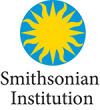Software is everywhere—in our desktop applications, mobile phones, coffee makers, automobiles, and pacemakers—yet how to categorize it and protect the work of its authors, inventors, and coders can be controversial. As language that controls machines, generates virtual worlds, and creates and solves equations, software crosses traditional boundaries. Since the emergence of computer software in the 1940s, inventors, legal scholars, attorneys, and jurists have wrangled with a number of issues and questions: Should a coded set of instructions (by itself) be eligible for intellectual property protection, or must the software be embedded physically in some device? To protect software, should developers apply for a patent or a copyright? Who should be responsible for detecting software piracy and infringement, and at what scale? How do we prevent overlapping or competing claims from stifling further innovation in one of our most dynamic industries?
Panelists will discuss the history and development of software IP protections while considering the concerns of inventors, corporations, and consumers.
Panelists
- Gerardo Con Diaz, Asistant Professor, Science and Technology Studies, University of California, Davis, and author of the forthcoming book, Software Rights: How Patent Law Transformed Software Development in America (Yale University Press, 2019)
- Susann Keohane, Master Inventor, Global Leader for Healthy Aging & Longevity, IBM
- Robert W. Bahr, Deputy Commissioner for Patent Examination Policy, USPTO
- (Moderator) Arthur Daemmrich, Director, Lemelson Center for the Study of Invention and Innovation, Smithsonian’s National Museum of American
- Closing Remarks: Sean O’Connor, Executive Director, Center for the Protection of Intellectual Property, and Professor, Antonin Scalia Law School, George Mason University




